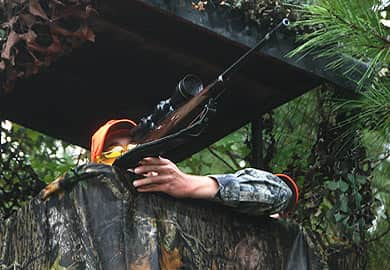Researchers Say Deer Culls Have Minimal Effect on Hunting
OutdoorHub Reporters 10.25.13

The culling of deer herds or other wildlife has long been an accepted form of population control, and can help reduce the spread of illnesses like chronic wasting disease (CWD). A recent study by researchers at the University of Illinois stated that in the long term, culls can keep disease in check without negatively affecting the number of deer harvested by hunters. The study, which was published in the journal Preventive Veterinary Medicine, concluded that there was little difference in the number of harvests between areas with population management and areas without.
The Illinois Department of Natural Resources (DNR) tests roughly 7,000 deer annually for CWD, which affects deer, elk, and moose. Since CWD is always fatal when contracted, culls are typically carried out by DNR-employed sharpshooters or other methods so the disease does not spread to healthy herds. Researchers discovered that disease control efforts have been impressively successful, with the prevalence of CWD in tested deer remaining at one percent over the last 10 years. But has it come at a cost to hunters?
“We wanted to know whether Illinois hunters have fewer deer to hunt now than they did before CWD,” said wildlife epidemiologist Nohra Mateus-Pinilla, one of the leaders of study. “We found that hunter harvest has increased, and the prevalence of CWD has been maintained at low levels for 10 years in Illinois.”
Some hunters believe that widespread culls mean less deer come hunting season, but researchers say this is not supported by the data—at least in Illinois.
“Since 2001, hunter harvest of deer has increased similarly in the northern region of Illinois, where CWD occurs, and the rest of the state, where there is no disease or sharpshooting,” said animal science professor Jan Novakofski, another of the study’s authors.
Since killing infected deer prevents the spread of disease, wildlife officials say that culls are beneficial in the long run. University of Illinois Life Sciences Editor Diana Yates reported that in only two Illinois counties did researchers find that deer culling directly affected hunter success. Otherwise, there seems to be no difference between CWD-affected areas and those with healthy deer populations. While this may be encouraging news for hunters, researchers still warn that CWD is a worrying problem and is increasing in many parts of the country.
“CWD is a prion disease (like mad cow disease) and it’s 100 percent fatal. There’s no current way that we can actually make the deer better, so it’s important that we keep it from spreading too far throughout the population,” said co-author Michelle Green.

